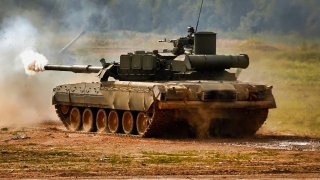Why Hasn't the Russian Army Gone All Out to Take Back Kursk?
For almost two months, Ukrainian forces have been inside Russia. Hundreds of square kilometers of Russian territory in the Kursk Oblast are under Ukrainian control after the surprise offensive in August.
For almost two months, Ukrainian forces have been inside Russia. Hundreds of square kilometers of Russian territory in the Kursk Oblast are under Ukrainian control after the surprise offensive in August.
But what is the biggest surprise is that the Russian military still hasn’t launched a major operation to retake the Kursk Oblast.
Russia’s Plans for Kursk
“Russian authorities have reportedly tasked Russian forces with pushing Ukrainian forces out of Kursk Oblast by mid-October 2024 and establishing a "buffer zone" into Ukrainian border areas along the international border with Russia in northeastern Ukraine by the end of October — significant undertakings that the Russian military is very unlikely to achieve in such a short period of time,” the Institute for the Study of War assessed in its latest operational estimate of the war.
According to Ukrainian sources, the Russian military has gathered almost 40,000 men in the Kursk Oblast for the upcoming push to expel the Ukrainian forces in the area. The Kremlin seems to have a set a deadline to achieve this goal by the middle of October.
Moreover, Moscow was looking to establish a five-to-one manpower superiority before launching the counterattack—according to standard military doctrine, an attacker needs a three-to-one superiority to have solid chances of victory. But that seems unrealistic without pulling more forces from the contact line in Ukraine—which is exactly what Ukraine was looking to achieve by invading Russia in the first place.
Russian forces have already launched a counterattack against the Ukrainian salient but without any significant success. They did retake some settlements, but the Ukrainians managed to trap some of the Russian elements with a localized counterattack.
However, the large-scale Russian effort to push back the Ukrainian forces is yet to come.
With the persistent very high casualty rates and the recruiting difficulties, the Russian military will have a hard time launching a large-scale operation in the Kursk Oblast and maintaining at the same time its offensive operations in the Donbas around Pokrovsk and Vuhledar.
One solution to this conundrum would be for Moscow to expand its recruitment efforts. However, the Russian military is facing backlash from the Kremlin.
“Russian President Vladimir Putin reportedly declined a request from the Russian Ministry of Defense (MoD) to offset Russian losses by declaring another mobilization wave in spring 2024 likely to avoid political costs associated with involuntary reserve call-ups,” the Institute for the Study of War stated.
Although Russia is, for all terms and purposes, a dictatorship, Putin is very careful to maintain the pretenses. Outwardly, he wants to appear as mindful of the desires of the Russian people. The Russian leader is a savvy political operator and doesn’t want to alienate the population.
Thus, his reluctance to press young Russian men to service in Ukraine—Russia has a conscription—is aimed at maintaining his popularity in the country.
“Putin has since remained committed to his crypto mobilization campaign, constraining Russia's mobilization potential,” the Institute for the Study of War added.
About the Author:
Stavros Atlamazoglou is a seasoned defense journalist specializing in special operations and a Hellenic Army veteran (national service with the 575th Marine Battalion and Army HQ). He holds a BA from the Johns Hopkins University and an MA from the Johns Hopkins’ School of Advanced International Studies (SAIS). His work has been featured in Business Insider, Sandboxx, and SOFREP.
Image Credit: Creative Commons/Shutterstock.


